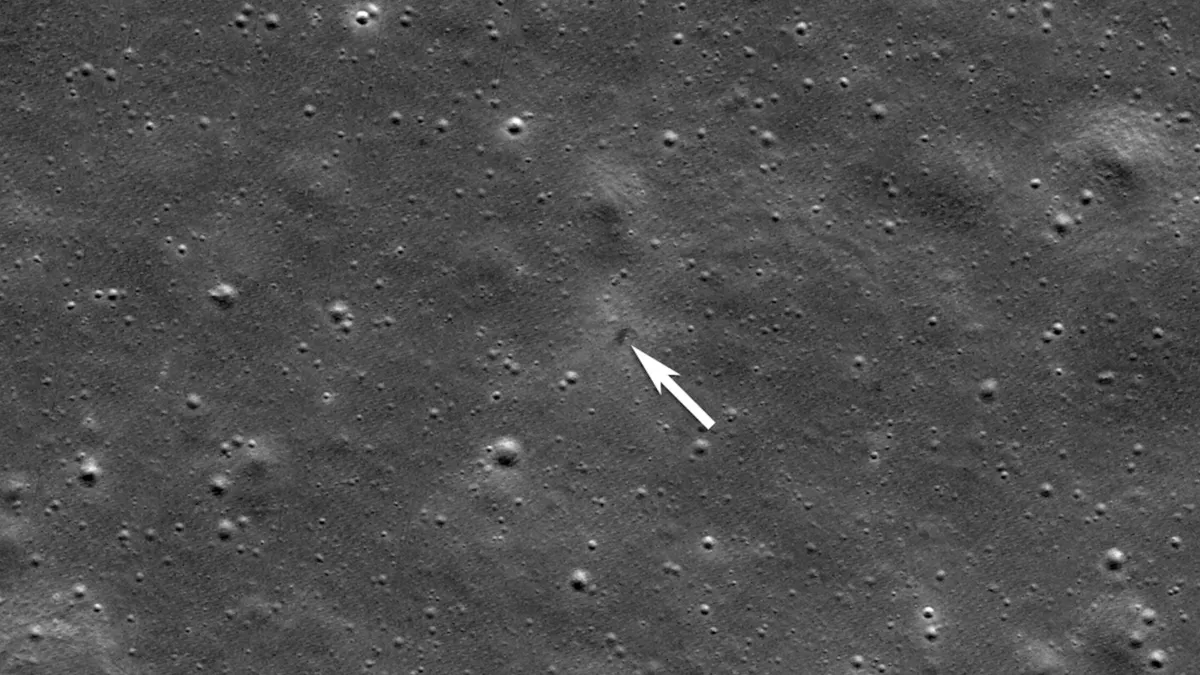
CAPE CANAVERAL, Fla. — In a significant development in lunar exploration, a NASA spacecraft currently orbiting the moon has successfully photographed the crash site of a lunar lander developed by a Japanese company. The images were released by NASA on Friday, just two weeks after the ispace lander, named Resilience, encountered a catastrophic failure upon attempting to land on the lunar surface.
The photographs reveal a dark smudge located in Mare Frigoris, also known as the Sea of Cold, which is a volcanic region situated in the moon’s far northern hemisphere. This area was the target for ispace's lander, which unfortunately crashed during its landing attempt. The images captured by NASA’s Lunar Reconnaissance Orbiter last week also depict a faint halo surrounding the crash site, a result of lunar dirt being disturbed and kicked up by the impact.
This incident marks the second significant failure for Tokyo-based ispace in a span of two years. The company had high hopes for this mission, which launched from Cape Canaveral back in January. Following the crash, company officials have announced plans to hold a news conference next week. During this briefing, they intend to provide further insights into what led to the failure of their latest lunar mission.
The coverage of this event has been made possible through the support of the Howard Hughes Medical Institute’s Department of Science Education and the Robert Wood Johnson Foundation. However, the Associated Press remains solely responsible for all the content published regarding this lunar mission and its implications for future exploratory endeavors.
As the exploration of the moon continues, the findings from NASA's observations will be crucial for understanding the challenges faced by private companies like ispace in the realm of space exploration.